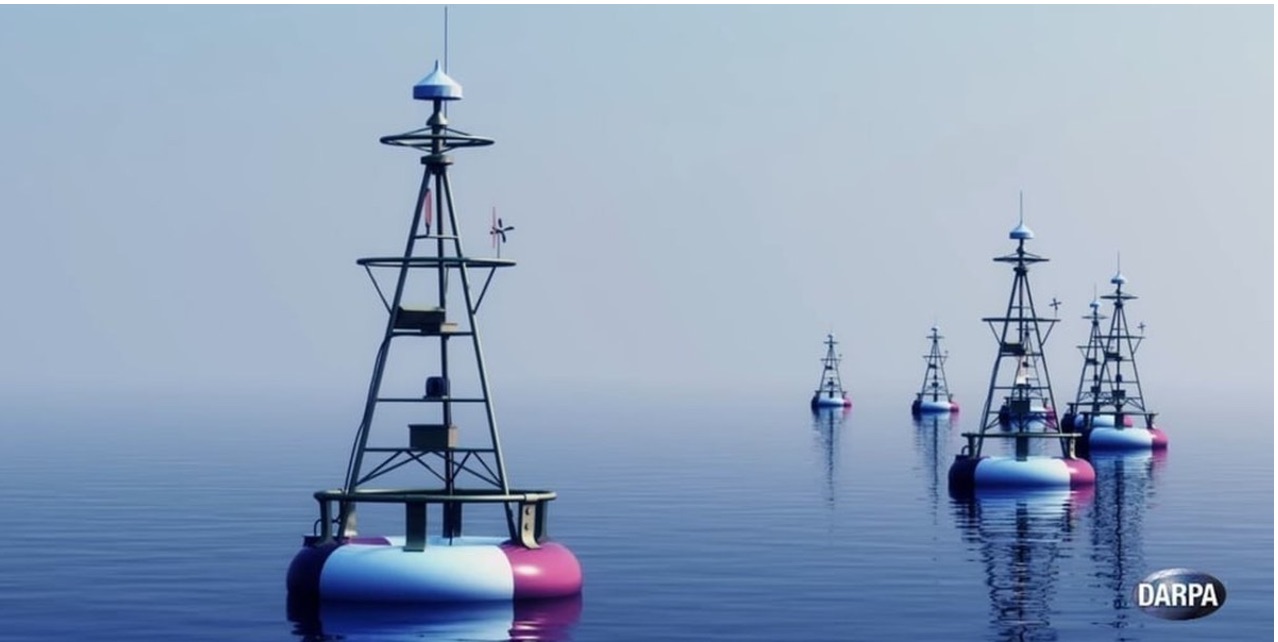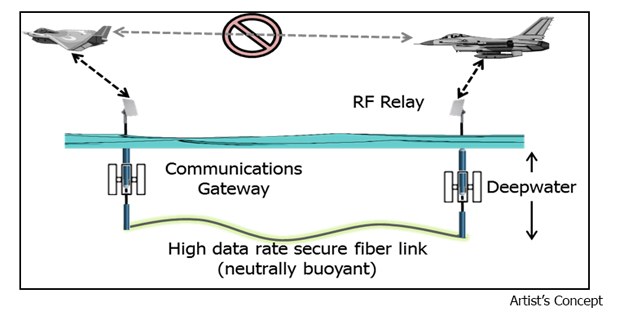
In the heat of battle, the United States military coordinates air and ground movements using a global communications network of satellite links, encrypted wireless networks and old-fashioned radios. But what happens if over-the-air transmissions are jammed or hacked by enemy operatives? Take it underwater, of course.
DARPA, the research and development arm of the Department of Defense, is in the testing phase of a deep ocean, fiber-optic network that would restore tactical communications if conventional satellites and radio frequencies are knocked offline.
Code-named TUNA (Tactical Undersea Network Architectures), the backup communications system would consist of a network of radio buoys strung together by hair-thin fiber-optic cables floating hundreds of feet below the ocean surface.
Building a "plan B" for mission-critical communication underseas presents some serious engineering challenges. DARPA works with U.S. universities and private industry to dream up the novel technologies that power future military operations such as this. For TUNA to work, engineers needed to develop super-thin fiber-optic cables that were tough enough to last 30 days in rough seas, and also self-powered buoys to keep the ad-hoc radio network online.
RELATED: DARPA Develops Implant to 'Plug' Brain into Supercomputers
Stepping up to the buoy challenge was a team of engineers from the Applied Physics Lab (APL) at the University of Washington, one of DARPA's official University Affiliated Research Centers. In less than a year, they sketched up and built out a bat-winged prototype that generates its own energy from passing waves.
Called WEBS (Wave Energy Buoy that Self-deploys), the system can be dropped into the ocean by airplane or boat. It works by capturing the kinetic energy of ocean swells and converting them to electricity using onboard generators. A "heave plate" floating 60 meters below stabilizes the central tube of the buoy while two floating wings move up and down with the waves.
Get the world’s most fascinating discoveries delivered straight to your inbox.
"As opposed to typical wave energy conversion devices, which are anchored to the seafloor and generate large amounts of power for sustaining onshore needs, this is all about having energy available in an offshore environment," said Andrew Stewart, principal engineer at APL, in a promotional video. Given the system's tactical military applications, Stewart couldn't comment further.
For the second phase of the TUNA project, DARPA has set aside $20 million in funding to build and test a working prototype of the seaborne communications network. The end-to-end system would not only need dozens of self-powered radio buoys, but thousands of meters of next-generation fiber-optic cable still in development.
The floating TUNA network is designed to be temporary, filling the gap until normal tactical communication links are restored. Still, DARPA has challenged the research community to come up with fast fixes in case a hair-thin strand of underwater cable is severed.
WATCH: How You Can Talk to an Astronaut From Home
Originally published on Seeker.



